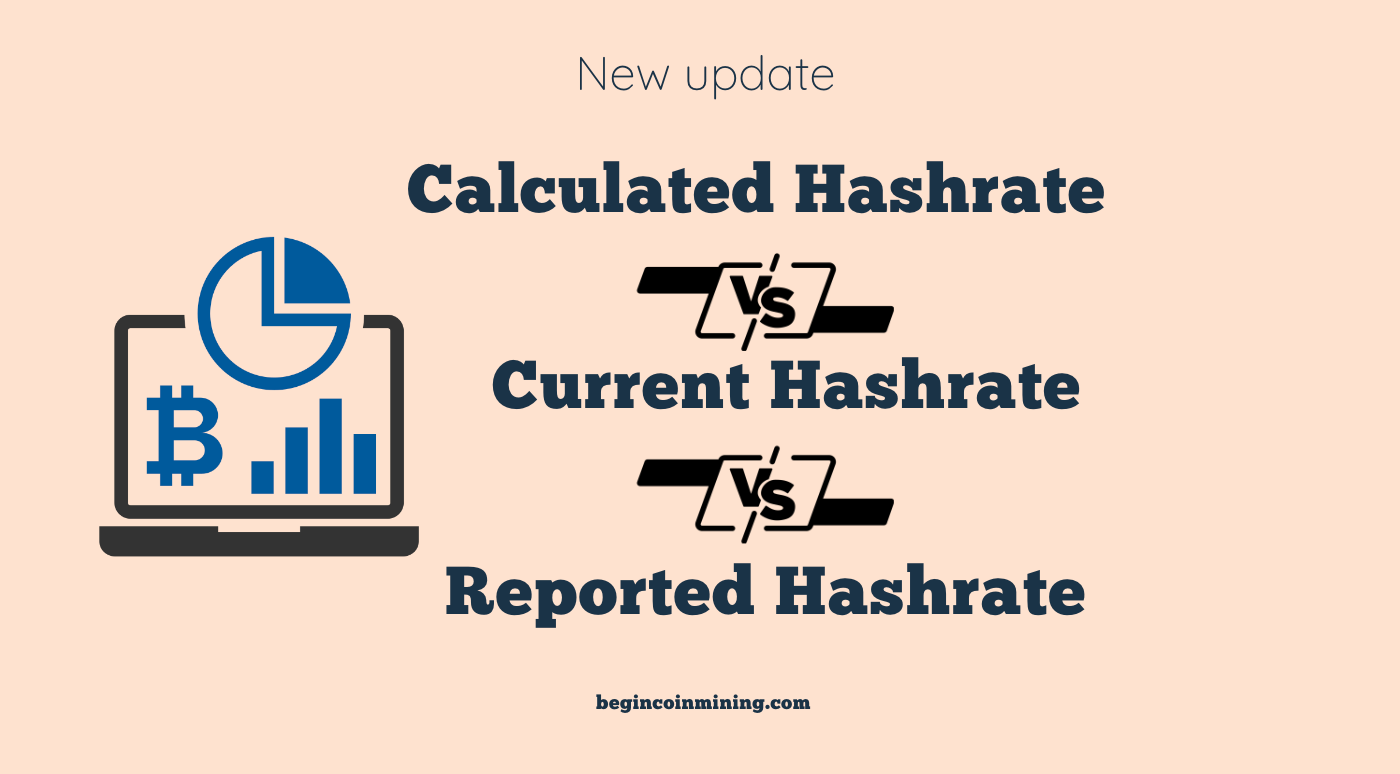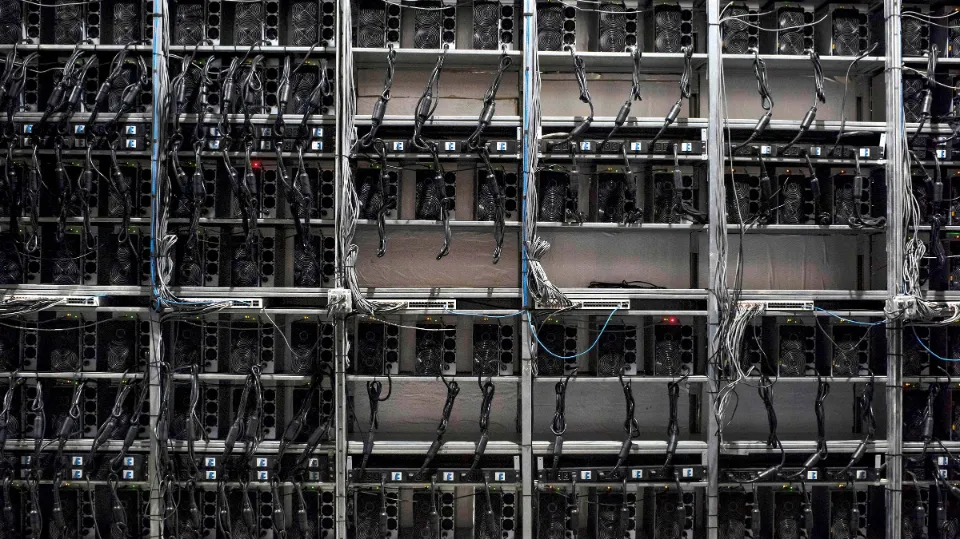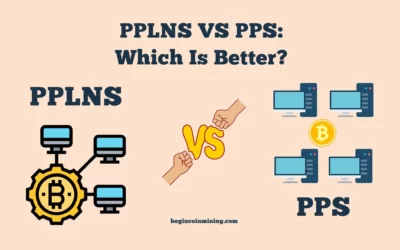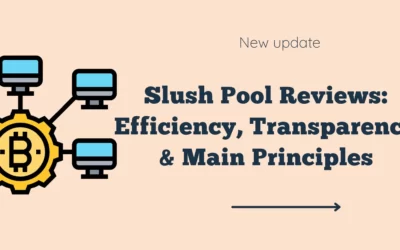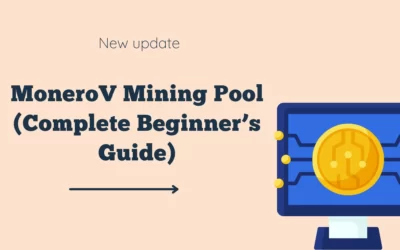Figure out the difference between Calculated Hashrate vs Current Hashrate vs Average Hashrate to optimize your mining plan better.
Mining Payout is based on calculated hashrate. Calculated hashrate is calculated from the accepted hashes that your hardware has submitted to the pool. This value can fluctuate above or below your reported hashrate. This should not be confused with the “Reported hash rate” which is the value that your mining software / app shows locally.
Current hashrate is also sometimes called effective hashrate. It is calculated based on the amount of shares you have submitted to the pool, share difficulty, and also luck.
Sometimes your pool and mining client report different hashrate values that are denoted with different names: current hashrate, average hashrate, reported hashrate, etc.
Keeping reading for the difference between Calculated Hashrate vs Current Hashrate vs Average Hashrate, and why your calculated hashrate is so low to optimize your mining plan better.
Calculated Hashrate
Calculated hash rate (CHR) is a value calculated at the mining pool side, this should not be confused with the “Reported hash rate” which is the value that your mining software / app shows locally.
Calculated hashrate is calculated from the accepted hashes that your hardware has submitted to the pool. Depending on your reported hashrate, this number may rise or fall.
The value that appears on your minerstat dashboard as well as the mining client (since minerstat displays the information that the mining client reports) is known as the reported hashrate. It refers to the hashrate you are achieving right now.
The reported hash rate (RHR) is calculated locally, it cannot be considered by mining pool as a critical stat because for the pool it can be any number sent by the local miner. One miner might, for instance, change the code of the mining program they are using to submit a significantly higher RHR in order to receive more rewards. There are instances where RHR isn’t even sent to the pool because the mining software or application doesn’t support it or doesn’t implement it.
That’s why the calculated hash rate (CHR) it’s so important for the pool, because it represents the real performance of your worker and is used for crediting rewards.
Current Hashrate
Effective hashrate and current hashrate are two different terms. Current hashrate is determined by the number of shares you have submitted to the pool, the share difficulty, and additionally by luck. Because of this, the current hashrate will not be displayed as a constant line but will instead fluctuate, sometimes being higher and other times being lower.
Average Hashrate
There is also an average hashrate, which provides information on the average over a specific time period, since the current or effective hashrate can fluctuate over time because it is determined by the difficulty and the number of shares being sent. From pool to pool, the time frame used to calculate the average can be different—one day, two days, etc.
Why is Your Calculated Hashrate So Low?
The pool’s effective total hash rate decreases as various miners come online and go offline. Your Calculated hash rate is also based on the total number of shares you have submitted over a predetermined period of time. The hash rate then stabilizes at the same level as your current hash rate. There are many factors that affect how high or low this number can be:
- Over time, your shares will become valid, invalid, or stale.
- Your network conditions (disconnections or downtime impact negatively)
- You network latency, which can translate into stale shares
- You PC load, which can cause instability that can cause invalid / incorrect shares
- A mining algorithm or software that is invalid or incompatible, rendering all shares worthless (0 CHR).
- A Firewall preventing outbound or inbound connections, which prevents your mining app from correctly submitting to or responding to the pool.
- Frequently removing or blocking your mining process is an antivirus.
CHR usually stays around 5% + or – than your RHR, also, CHR starts from 0, it will raise over time (some hours).
Check every possibility and your current valid and invalid shares on the miner side to find any potential problems.
Why is Your Reported Hashrate So Low?
You may want to think about making some optimizations if your reported hashrate and average hashrate differ noticeably.
Usually there is a somewhat significant difference between reported hashrate and average hashrate. This is considered normal, so don’t worry about the reported hashrate too much. The higher the reported rate, the better is the average hashrate. But keep in mind, if you push your workers too hard then the calculated hashrate will take a plunge creating a gap between reported and calculated. That will affect your payouts.
- The crucial figure is the calculated hashrate. Using reasonable overclocks will help you get higher, which is better.
- Maintain a slight difference between the reported and mean (calculated) hashrates.
- Your worker is probably overclocked too high and not effectively hashing if your mean hashrate is significantly lower than your reported hashrate. Despite the fact that your hashrate may be higher, you are producing more rejected or invalid hashes. In most cases, miner logs can attest to this.
- Your effective hashrate may be impacted if there are a lot of stale shares. Look into your internet connection. There will be an increase in deaths due to Wi-Fi.
- Variations in the average hashrate are common.
- Your performance will be improved by higher average hashrates. Keep in mind that this is a marathon and not a race.
Conlusion: Optimizes Your Mining Woker
If your calculated hashrate, reported hashrate, currenent hashrate and average hashrate are significantly different, then you might consider making some optimizations.
Be sure to check all posibilities and your current valid / invalid shares at miner side, to identify any possible issue.
Hash Rate FAQs
What is a Mining Pool?
A mining pool is an organization of resources by miners who pool their hashrate, or processing power, over a network in order to split the reward equally, in proportion to the amount of work they put into increasing the likelihood of finding a block. A “share” is awarded to members of the mining pool who present a valid partial proof-of-work.
A share is a hash that is typically less difficult than the network difficulty and smaller than the target for difficulty. There is a possibility that each hash produced contains a legitimate share. Because they happen at random, miners have no control over when they will generate a share. When one miner in the pool discovers the solution hash, the rewards can then be distributed according to the number of shares that each miner has submitted. There are numerous reward options, including PPS, PPS+, and PPLNS. These reward types calculate the “fair share” of the reward, but all pools use a share as a “proxy” for work completed by each miner. Actual value of a share is zero. The only hash that is valuable is the one that breaks a block. A share is simply a way to divide any rewards that the pool earns.
What is Hashrate?
The indicator of a miner’s efficiency is their hashrate (or hash rate). It refers to how quickly a miner completes a task. The term “hash rate” refers to the number of times per second that the SHA-256 algorithms are used. The efficiency of a miner is gauged by the number of hashes performed each second, or H/s. A higher hash rate increases the likelihood of earning a block reward.

